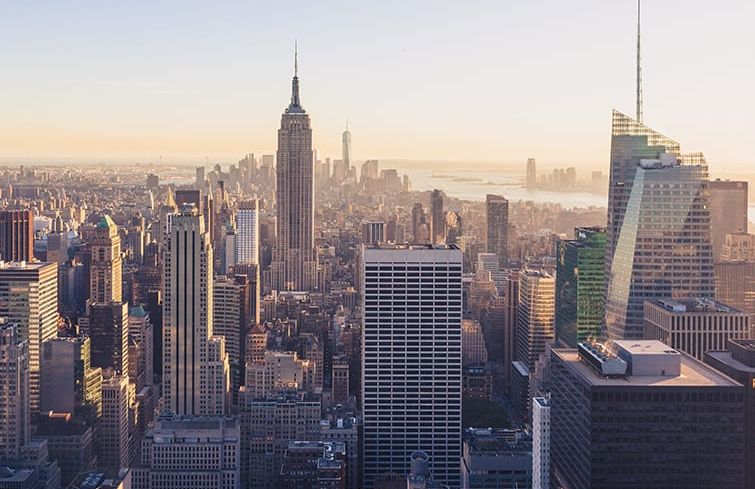Presented By: AtmosAir
Cure Sick Buildings By Making the Invisible Visible
By Toby Abate March 22, 2021 8:00 am
reprints
In the U.S. and many other countries, commercial buildings can sometimes suffer from environmental problems that can adversely impact the occupants of the building. The U.S. Environmental Protection Agency has coined a term for these spaces, sick buildings, as well as a term for the condition, sick building syndrome (SBS). In the age of COVID-19, understanding this — and combatting it through air purification technologies, such as bipolar ionization — is crucial for building owners as they look to instill confidence in the spaces people inhabit.
SBS is defined as 20 percent or more of occupants in a building complaining of discomfort and health-related issues that are linked to time spent in the building. People can experience symptoms, such as headaches; ear, nose and throat irritations; dry skin; itching; nausea; dizziness and sensitivity to odors. Importantly, the symptoms persist while in the building, but are quickly relieved when not in the building.
How big of a problem is this? According to a 1984 report from the World Health Organization, it was estimated that 30 percent of buildings suffer from indoor air quality (IAQ) issues and SBS. Additionally, illness led to absenteeism and lost productivity. In fact, the EPA has estimated that businesses in the U.S. lose $60 billion per year due to lost productivity. So, sick buildings and their effects on people can have huge financial impacts.
What causes SBS?
There can be many factors that contribute to SBS. A building that was designed for one purpose and is now being used for another, for example, can be a contributing factor — e.g., a building that was designed for office activities but is now used for industrial printing. In this case, the ventilation system wouldn’t have been designed for its current use. With the high number of repositioning projects in recent years, and especially during COVID, this is a major concern.
Chemical contamination can be another cause. Chemical usage inside the building, materials and products used in the building can all off-gas volatile organic compounds (VOCs), which can produce irritations. Added to this, chemicals or other pollutants can be carried into the building. For example, if a factory opens up nearby, it can cause disturbing odors. Biological contamination, such as mold, mildew and bacteria from uncontrolled moisture, can also cause health symptoms and discomfort by occupants.
VOCs and exposure to them are the most common cause of SBS. SBS complaints align with symptoms from exposure to VOCs in general, causing many of the above-described symptoms for susceptible individuals, symptoms that are relieved when exposure to the VOC is reduced or eliminated.
What you can do to prevent SBS
There are three important factors to consider for any building’s air quality:
- – Source control
- – Ventilation
- – Air cleaning
Source Control
Minimizing the source of pollutants inside or entering the building is important. Chemical usage and material selections that are low VOC-emitting should be used. Also, the building envelope should be checked to see if unwanted air and pollutants are entering the building. Water intrusion, moisture and humidity control is also important, as these factors can lead to mold and mildew with their associated problems.
Building maintenance records should be kept and maintenance performed regularly. Added to this, every building should appoint an indoor air quality manager to maintain air testing records, record IAQ complaints and address other environmental issues.
Ventilation
Ventilation is important for health and comfort in any building, and the ventilation design should be done to ASHRAE standards. The proper design of delivering air in a balanced fashion is critical to indoor air improvement success. Poor ventilation design and poor pressurization can often cause or contribute to SBS situations.
Air Cleaning
Even by minimizing pollutant sources, and instituting proper ventilation and air movement, the building will need to address airborne contaminants that can be a byproduct of the structure, its location and the occupants and their activities. Bipolar air ionization, an active, continuous air purification technology, is an increasingly necessary method that has a high level of success in these situations, as well as in combating coronavirus and other pathogens.
As a large-scale example, the U.S. Army has installed more than 500 of these systems to help prevent and correct SBS situations in many of their bases. The bipolar technology presents several advantages: it addresses VOCs effectively, it easily adapts to existing building heating and cooling systems, it is a low-maintenance product (so it retains effectiveness without frequent attention), and it operates efficiently. Buildings across asset types, from stadiums and schools to offices, industrial facilities and hospitals, have used these systems to reduce the need to pump in outside air and save significant energy costs while providing better air quality for occupants.
With some knowledge of how SBS situations can happen and the factors that can cause SBS, building operators can structure a plan to prevent occupant discomfort and illness to address building-related complaints quickly and effectively.
Tony Abate is vice president and chief technical officer at AtmosAir Solutions in Fairfield, Conn., (www.atmosair.com) and a certified indoor environmentalist (as designated by the Indoor Air Quality Association and the American Air Quality Council).



